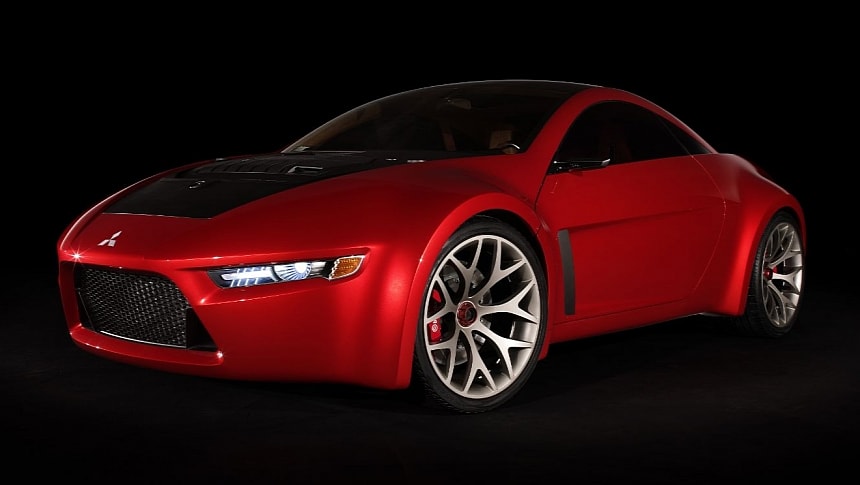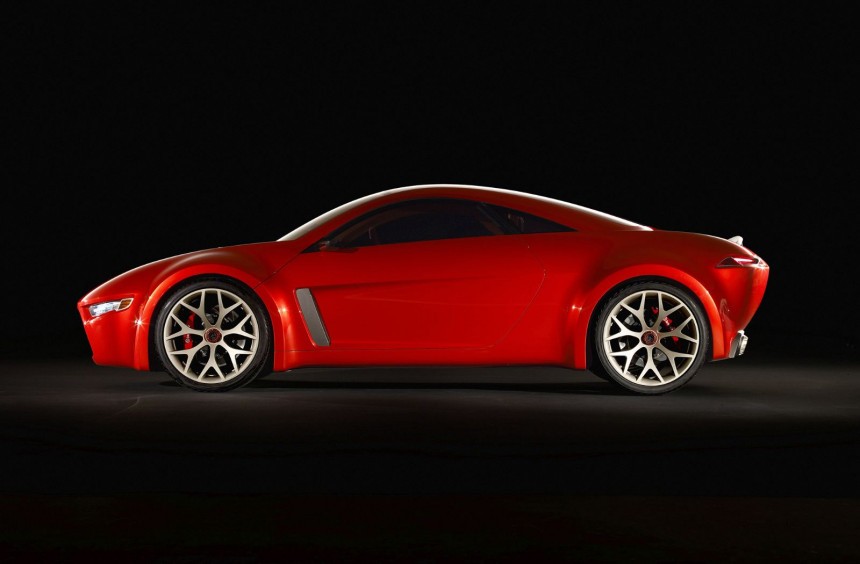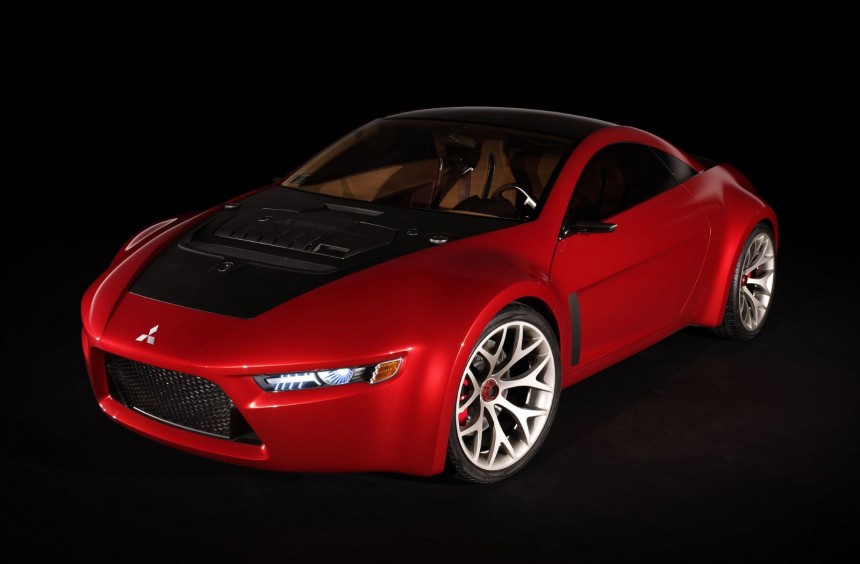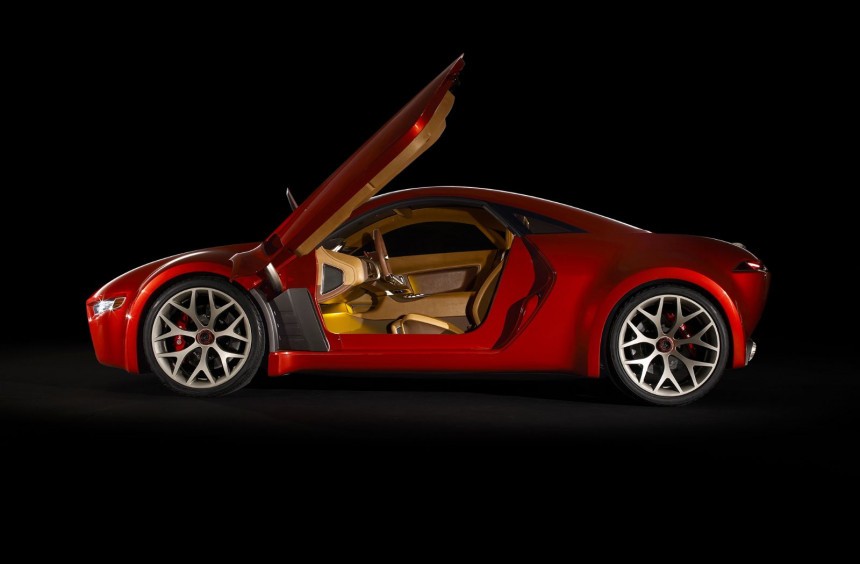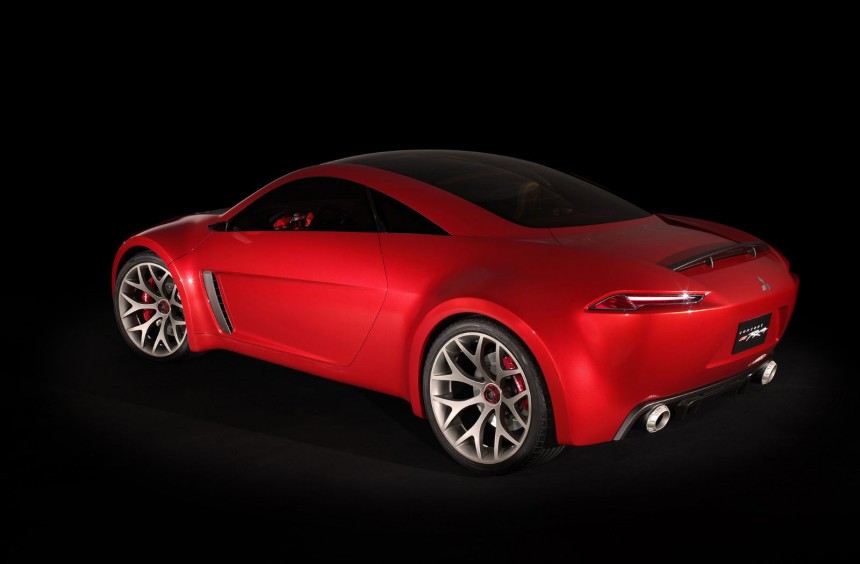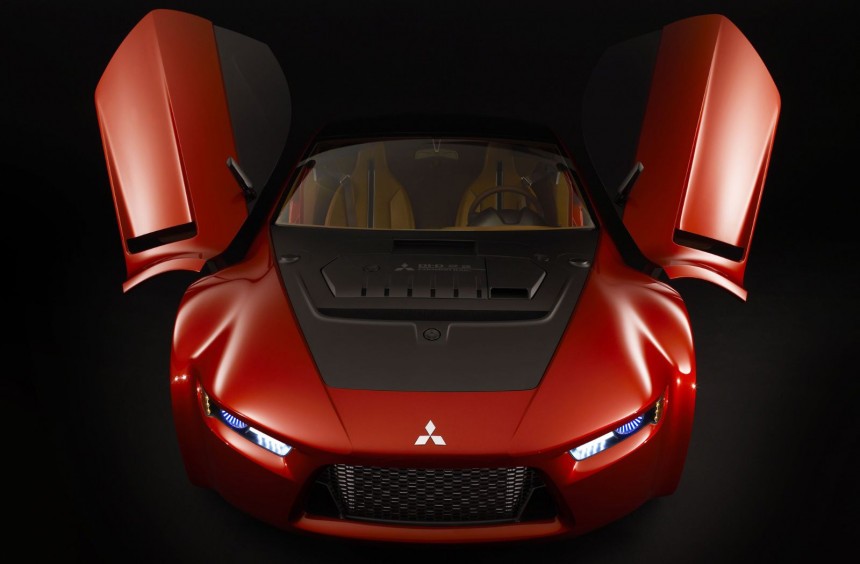Equipped with a torquey turbodiesel four-cylinder, all-wheel-drive, and active steering, this Japanese Audi TT slayer was one of those concepts that deserved a production run.
During the last 20 years, carmakers from around the globe have showcased many fascinating concepts.
In most cases, these one-offs were conceived to showcase future design languages and technologies, but at no point were they considered for production.
Nevertheless, some concepts had such a positive impact that many enthusiasts prayed that automakers would change their minds.
One such case was the Mitsubishi's Concept-RA, a beautiful, high-tech sports car that had the potential to reignite interest in the Eclipse line.
Back in the 1980s and 1990s, all important Japanese manufacturers were heavily involved in the development of somewhat affordable sports cars that took the world by storm.
Toyota had the Supra and MR2, Nissan offered the two-door version of the Skyline, the Z, and the Silvia, Honda sold the NSX and S2000, while Mazda had its rotary RXes. At the same time, Mitsubishi countered with the 3000GT (GTO, in Japan) and the Eclipse.
The Eclipse was first introduced in 1989 as a mid-level compact sports car. Based on an FWD platform and available with an AWD system, the US-assembled model became successful for offering a multitude of trims and drivetrains that attracted a wide range of buyers.
The initial Eclipse was replaced by a thoroughly-improved model in 1994. The second generation was even more successful, so the model line continued into the 21st century with two additional iterations.
The fourth, produced from 2005 to 2011, didn't have quite the impact that Mitsubishi had hoped for - especially in the second part of the production run, so the manufacturer chose to discontinue it after the 2012 model year.
The sports car did not return, and seven years later, the nameplate was attributed to a new crossover, which signaled the company's SUV-centric vision for the immediate future.
While the second-generation Eclipse was a major improvement over the first, particularly in terms of styling, the third just didn't look right.
In 2005, the fourth iteration of the Eclipse attempted to fix the styling deficiencies of its predecessor. It's safe to say that it succeeded but was still far from the awesomeness of the second-gen.
Three years later, at the 2008 North American International Auto Show held in Detroit, the Japanese manufacturer unveiled a sports car that seemed destined to become the most gorgeous Eclipse ever made.
Though, officially, it wasn't presented as the future Eclipse, its compact dimensions, front-mounted transverse engine, and subtle styling similarities made it clear it could be.
Donning a metallic red finish contrasted by a blacked-out hood with an integrated engine cover, wide wheel arches, and concave, 21-inch center-lock wheels, the Concept-RA looked far more aggressive than the fifth-gen Eclipse.
While the press and the gearhead community were in awe with its styling, the RA had a lot more to offer than just eye-catching looks.
The sports car, with its butterfly-opening doors, was built around an aluminum space frame chassis equipped with Brembo performance brakes as well as the Evolution X's active steering and active suspension systems, all of which improved the handling characteristics.
Another feature shared with the Evo X was the Super-All Wheel Control (S-AWC). This was big news because the production Eclipse lacked an AWD system since the late 1990s.
Even more interesting, the system was said to be a thoroughly improved prototype version developed specifically for the RA's platform.
When the hood was lifted, everyone expected to see the EVO X's new turbocharged inline-four, but Mitsubishi chose to go for a diesel since this fuel-efficient type of engine was increasingly popular in passenger cars during that period.
The unit at the heart of the RA was a novel 2.2-liter version of the 4N14, a new DOHC 16-valve turbo diesel that went into production several years later.
Coupled with a six-speed dual-clutch automatic, it was rated at an unimpressive 201 hp, yet it delivered a healthy 310 lb-ft (420 Nm) of torque.
Mitsubishi stated that the engine was a clean diesel equipped with a new catalytic converter system that featured an oxidation catalyst and a NOx trap catalyst, but ever since the Dieselgate scandal, we know just how inefficient a trap catalyst was back then.
Nevertheless, had it made it into production as the new Eclipse, Mitsubishi would've undoubtedly added a gasoline option to the engine list.
After the concept was unveiled, the press and Mitsubishi enthusiasts expected the company to announce that it would become the fifth-generation Eclipse.
As I mentioned earlier, Mitsubishi never made an official statement regarding a potential connection between the RA and the Eclipse, but since the public reaction was more than positive, I'm sure that a production run was considered.
Had it made it onto the streets, the RA could've posed a real threat to Audi's TT, particularly in Europe, where the compact sports car was very popular.
Unfortunately, the fourth-gen Eclipse wasn't a sales success, and interest in compact sports cars was dwindling, especially in the US. Therefore, even if a production run was considered, the RA never went past the show car stage.
Forgotten today, yet still impressive and modern-looking, the Concept-RA could've helped rewrite the Eclipse story, and maybe Mitsubishi's current, painfully boring lineup would still feature an exciting sports car.
Unfortunately, the Eclipse is now a run-of-the-mill crossover, and the company has ceased to develop sports cars or anything remotely exciting.
For a quick virtual tour of this fascinating concept, we recommend watching the YouTube video below by Auto Media.
In most cases, these one-offs were conceived to showcase future design languages and technologies, but at no point were they considered for production.
Nevertheless, some concepts had such a positive impact that many enthusiasts prayed that automakers would change their minds.
One such case was the Mitsubishi's Concept-RA, a beautiful, high-tech sports car that had the potential to reignite interest in the Eclipse line.
A brief history of the Mitsubishi Eclipse
Toyota had the Supra and MR2, Nissan offered the two-door version of the Skyline, the Z, and the Silvia, Honda sold the NSX and S2000, while Mazda had its rotary RXes. At the same time, Mitsubishi countered with the 3000GT (GTO, in Japan) and the Eclipse.
The Eclipse was first introduced in 1989 as a mid-level compact sports car. Based on an FWD platform and available with an AWD system, the US-assembled model became successful for offering a multitude of trims and drivetrains that attracted a wide range of buyers.
The initial Eclipse was replaced by a thoroughly-improved model in 1994. The second generation was even more successful, so the model line continued into the 21st century with two additional iterations.
The fourth, produced from 2005 to 2011, didn't have quite the impact that Mitsubishi had hoped for - especially in the second part of the production run, so the manufacturer chose to discontinue it after the 2012 model year.
The sports car did not return, and seven years later, the nameplate was attributed to a new crossover, which signaled the company's SUV-centric vision for the immediate future.
Back then, the future looked bright
In 2005, the fourth iteration of the Eclipse attempted to fix the styling deficiencies of its predecessor. It's safe to say that it succeeded but was still far from the awesomeness of the second-gen.
Three years later, at the 2008 North American International Auto Show held in Detroit, the Japanese manufacturer unveiled a sports car that seemed destined to become the most gorgeous Eclipse ever made.
Though, officially, it wasn't presented as the future Eclipse, its compact dimensions, front-mounted transverse engine, and subtle styling similarities made it clear it could be.
Donning a metallic red finish contrasted by a blacked-out hood with an integrated engine cover, wide wheel arches, and concave, 21-inch center-lock wheels, the Concept-RA looked far more aggressive than the fifth-gen Eclipse.
Showcasing Mitsubishi's latest tech
The sports car, with its butterfly-opening doors, was built around an aluminum space frame chassis equipped with Brembo performance brakes as well as the Evolution X's active steering and active suspension systems, all of which improved the handling characteristics.
Another feature shared with the Evo X was the Super-All Wheel Control (S-AWC). This was big news because the production Eclipse lacked an AWD system since the late 1990s.
Even more interesting, the system was said to be a thoroughly improved prototype version developed specifically for the RA's platform.
An atypical engine choice
The unit at the heart of the RA was a novel 2.2-liter version of the 4N14, a new DOHC 16-valve turbo diesel that went into production several years later.
Coupled with a six-speed dual-clutch automatic, it was rated at an unimpressive 201 hp, yet it delivered a healthy 310 lb-ft (420 Nm) of torque.
Mitsubishi stated that the engine was a clean diesel equipped with a new catalytic converter system that featured an oxidation catalyst and a NOx trap catalyst, but ever since the Dieselgate scandal, we know just how inefficient a trap catalyst was back then.
Nevertheless, had it made it into production as the new Eclipse, Mitsubishi would've undoubtedly added a gasoline option to the engine list.
It wasn't meant to be
As I mentioned earlier, Mitsubishi never made an official statement regarding a potential connection between the RA and the Eclipse, but since the public reaction was more than positive, I'm sure that a production run was considered.
Had it made it onto the streets, the RA could've posed a real threat to Audi's TT, particularly in Europe, where the compact sports car was very popular.
Unfortunately, the fourth-gen Eclipse wasn't a sales success, and interest in compact sports cars was dwindling, especially in the US. Therefore, even if a production run was considered, the RA never went past the show car stage.
Forgotten today, yet still impressive and modern-looking, the Concept-RA could've helped rewrite the Eclipse story, and maybe Mitsubishi's current, painfully boring lineup would still feature an exciting sports car.
Unfortunately, the Eclipse is now a run-of-the-mill crossover, and the company has ceased to develop sports cars or anything remotely exciting.
For a quick virtual tour of this fascinating concept, we recommend watching the YouTube video below by Auto Media.
